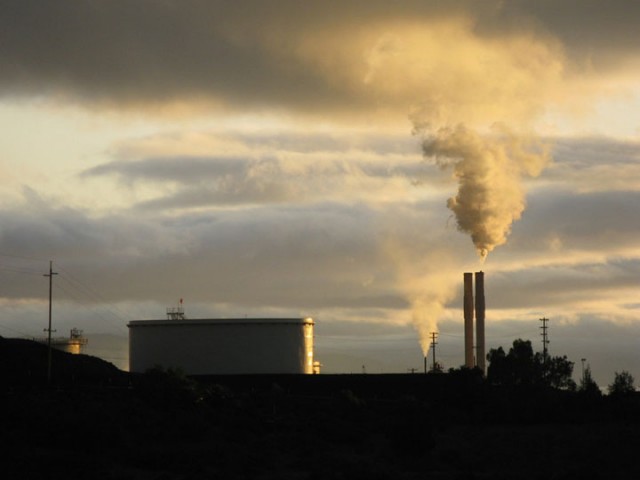The quest for direct capture has been frought with failure. Last year, a Swiss company called Climeworks launched a DAC pilot facility. The plant contains massive fans that blow air into a solution that contains a carbon-capturing chemical.
But the American Physical Society found that the procedure would likely cost about $600 per metric ton of captured CO2. With our addiction to fossil fuel contributing close to 40 billion metric tons of CO2 a year, which doesn’t “pencil.”
Similarly, the technology developed by Carbon Engineering works by capturing the CO2 in a solution that reacts with the carbon and converts it into a solid — and at lower cost. From the journal Nature:
Carbon Engineering’s design blows air through towers that contain a solution of potassium hydroxide, which reacts with CO2 to form potassium carbonate. The result, after further processing, is a calcium carbonate pellet that can be heated to release the CO2. That CO2 could then be pressurized, put into a pipeline and disposed of underground, but the company is planning instead to use the gas to make synthetic, low-carbon fuels. Keith says that the company can produce these at a cost of about $1 per litre. When Carbon Engineering configured the air-capture plant for this purpose, they were able to bring costs down to as low as $94 per tonne of CO2.
Keith and his team used their findings to project the costs of an actual commercial plant with the same technology. They claim their technology can capture CO2 for between $94 and $232 per metric ton.
“This isn’t going to save the world from the impacts of climate change, but it’s going to be a big step on the path to a low-carbon economy,” Keith told National Geographic.
The company uses a separate pilot project to convert the captured carbon into liquid fuels, including gasoline. From Science Magazine:
[B]ecause the process recycles carbon from the air, it would constitute a low-carbon fuel, something that places such as California are increasingly requiring in their fuel mixes, and which command a premium price.
The eventual demand could further drive down costs. But for the technology to truly succeed in making a dent in international climate recovery goals, it will require widespread adoption, according to Klaus Lackner, director at the Center for Negative Carbon Emissions at Arizona State University.
“We will need a trillion-dollar industry to [keep warming below 2 degrees C]. That seems like a lot, but today’s airline industry is larger,” Lackner told National Geographic.
The Economist magazine reports that the founders of Carbon Engineering want to eventually license their technology to fuel manufacturers. They hope to begin construction of their first commercial plant before the end of the year.

